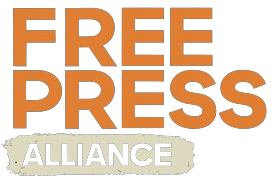Avoid Social Media Censorship and Protect Your Content
Social media censorship is a growing concern for journalists, activists, and digital content creators. Platforms like Facebook, X (formerly Twitter), YouTube, and Instagram enforce moderation policies and algorithms that, in some cases, may unfairly remove posts or restrict accounts. To improve visibility and prevent your content from being deleted, follow these key tips.
1. Understand Each Platform’s Policies
Each social media platform has specific rules regarding misinformation, hate speech, and inappropriate content. Review the terms and conditions of each platform and stay updated on their policies. Some platforms allow appeals if you believe your content was unfairly removed.
2. Use Relevant Keywords Without Triggering Restrictions
Algorithms may flag certain words or phrases as indicators of problematic content. Rephrase your message without altering its essential meaning and optimize your posts with SEO-friendly keywords related to freedom of speech, social media censorship, and digital content protection.
3. Share Your Content Across Multiple Platforms
Don’t rely on just one social media platform. Publish your content on blogs, newsletters, forums, and decentralized platforms like Mastodon or PeerTube to avoid dependence on major tech corporations and improve your SEO ranking.
4. Build an Engaged and Active Community
Encourage interaction with your audience by getting them to share, comment, and like your content. The more engagement your posts receive, the greater their organic reach, strengthening your online presence and helping you avoid censorship.
5. Back Up Content and Use Alternative Distribution Strategies
Save copies of your posts and videos on cloud services like Google Drive or Dropbox. Consider using newsletters on platforms like Substack and blogs on WordPress as alternative channels to share your content directly with your audience without intermediaries.
6. Use Encryption and Secure Communication Channels
If you work with sensitive information, use encryption tools and secure messaging apps like Telegram, Signal, and Matrix. These channels help distribute information without being subject to traditional social media censorship.
7. Appeal Decisions and Document Censorship
If your content is removed, use the platform’s appeal mechanisms and document the case. Raise awareness by sharing your experience on other digital platforms to push for greater transparency in content moderation. You can learn more about digital rights on sites like the Electronic Frontier Foundation (EFF) and Access Now.
Conclusion
Social media censorship is a challenge, but with the right strategies, you can minimize its impact and continue sharing information effectively. Optimize your content for SEO, stay informed, and always look for new ways to spread your message without restrictions.

